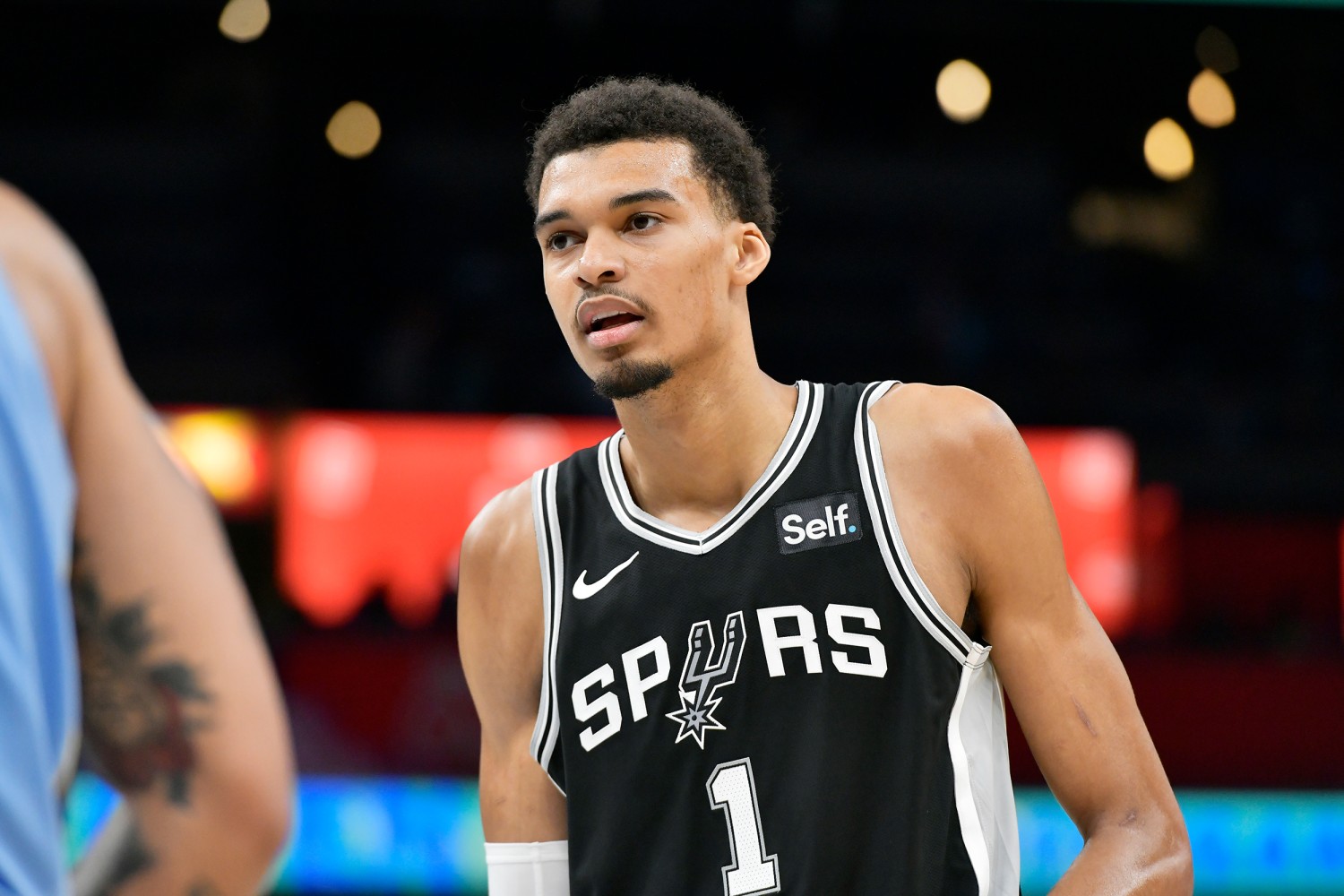Victor Wembanyama’s first taste of the NBA resulted in All-Rookie First Team honors, a unanimous Rookie of the Year selection, the league lead in blocks, an All-Defensive First Team nod and a second-place finish for Defensive Player of the Year. It’s not too shabby for a young man below the drinking age (20), considering most players will never sniff such on-court impact. And he’s getting back to work soon.
This summer, he will participate in the Olympic Games for France, playing alongside notable NBA veterans Rudy Gobert and Nicolas Batum. A brief return to international competition is a plus for his development because of the continued exposure to the physicality and different coverages/philosophies he’ll encounter against other countries.

When the world’s games are over, he’ll have close to two months of training and downtime before NBA camp opens. Going into the next season, there are reasonable expectations for the Spurs’ improvement: compete for a Play-In Tournament spot and boost the defense. Wembanyama’s production needs to rise in some areas to achieve this expeditiously.
It starts with throwing weights up like the Admiral David Robinson to increase his acreage. Strength in the legs and upper body will prevent his matchups from wearing him down through physicality, and increased power will elevate his confidence as a close-range attacker and disruptor.
Additionally, a larger frame would make it harder to get around his screens, buying his teammates an extra half a second for a jumper or drive to the cup. In the 2023-24 season, Wembanyama averaged 1.9 screen assists, which turned into 4.2 points per game. From now on, he needs to be more active as an offensive lineman.
On offense, Wembanyama was a trigger-happy big man, launching from everywhere in the half-court yet not generating enough free throw attempts. In charity shooting, he averaged 5.2 free throw attempts per game, which indicates he is not utilizing his unique 7-foot-4 size and eight-foot wingspan enough. Counting how monstrous his efficiency is in the paint (he makes 60 percent of field goals), an effort should be made to go at his matchup or help defenders at short distances in higher volume to put the opponent in penalty trouble.
At his size, using a frequent hook from eight feet and in could be the go-to move that generates steady double teams, uncovering an area for a teammate. According to NBA Stats, the rookie logged 23 of 51 hook shots during his 2023-24 campaign. The weapon isn’t consistently there yet for him, but having it in his arsenal is the equivalent of a heavyweight fighter deploying a quick and vicious jab for separation.
To boot, Wembanyama hoisted tons of attempts outside of the lane at a suboptimal efficiency. His percentage on those ventures was 30.9 percent, which was 49.5 percent of his shot diet. Eventually, his deep accuracy will improve. But in the meantime, some of those shots aren’t helpful because he has bailed out the defense. Anytime rivals avoid a try inside the arc, they have won, even if Wemby downs a triple. There’s no need for a double team when he’s dancing behind the arc, and the rest of the Spurs can be guarded more easily.
On defense, his prowess as a shot blocker is the team’s foundation because he puts brakes on opposing offenses. He had at least five blocks in 23 of his 71 outings. But Wembanyama is not as effective at covering the outside against pick-and-roll.
The Sacramento Kings targeted him on the go with two-man actions, setting up a drive to the rim and an outside jumper in the Feb. 22 match the former won. The Minnesota Timberwolves were mercilessly looking for him in the second half of their Feb. 27 win over the Spurs. And the Houston Rockets followed the same strategy in their victory on March 5.
In each game, Wembanyama dropped after the screen, sometimes too low, allowing the ball handler space to catch momentum on the run. On the other possessions, he couldn’t do anything to bother the deep jumper when his teammate was blocked off by the screen because he was in the back waiting. If he started coming up higher versus pick and roll, it would make it much harder for the opponent to dribble to the cup or take a jumper because his length is difficult for ball handlers to read.
Another bad habit he must correct immediately is biting on fakes. This infraction allows the ball handler to put him on the back hip. Luckily for Wembanyama, his size and wingspan buy him an opportunity to stay in the play for the chase down, but that’s if he keeps up, and a teammate will probably have to rotate to the ball. He will likely never be shorter than anyone on the court, too, so leaving his feet is futile and grounds for a quick benching.
Wembanyama is a worker and a fast learner. If he significantly improves in all areas- strength, accuracy, pick and roll defense and not biting on fakes- he’ll be a top-five player in the world a year from now














